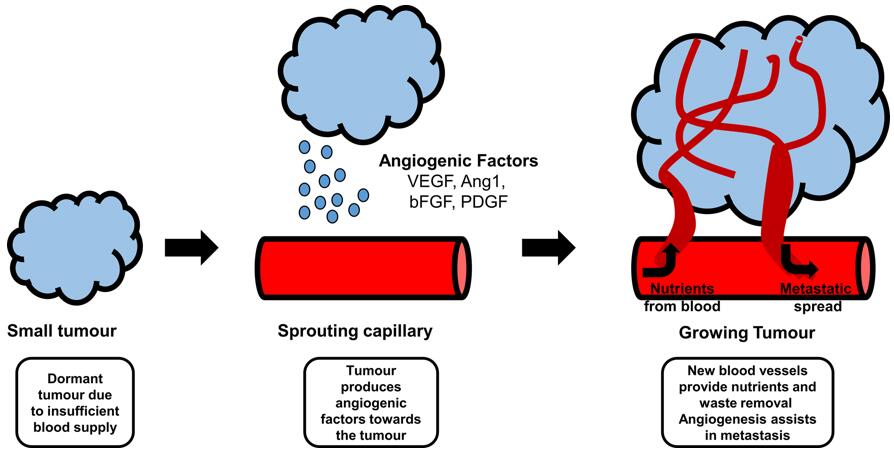Angiogenesis is the process of generating new blood vessels from pre-existing ones. The major cells involved in this process are endothelial cells, which are the building block of our entire vascular system. To generate new blood vessels, endothelial cells have to first escape from their original location by producing enzymes to move through the basement membrane. Once this is achieved, endothelial cells migrate toward the angiogenic stimulus, for example, which might be released from tumor cells. Moreover, endothelial cells proliferate to produce sufficient number of cells required to form new blood vessels. Subsequently, these new outgrowths of endothelial cells will reorganize into a tubular structure. Each of these elements, basement membrane degradation, cell proliferation, migration, and tube formation, is a target for intervention that can be tested.
 Figure 1. A schematic diagram of tumour angiogenesis.[1]
Figure 1. A schematic diagram of tumour angiogenesis.[1]
There are numerous assays for studying tumor angiogenesis, which can be used to evaluate the pro- or anti-angiogenic effects of treatments. Creative Bioarray offers various in vitro angiogenesis testing services to support your research.
Reference:
1. Olsen JJ, Pohl SÖ, Deshmukh A, et al. The Role of Wnt Signalling in Angiogenesis. Clin Biochem Rev. 2017;38(3):131-142.
Online Inquiry